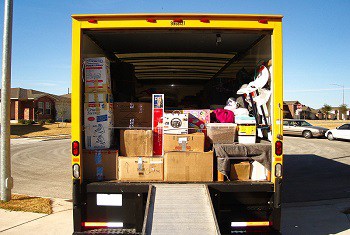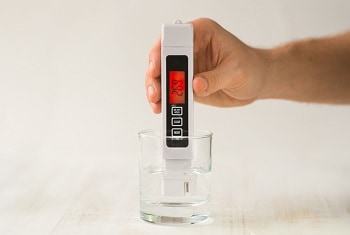Maybe a better question would be “Should I Take My Water Softener With Me When I Move? You’ve got everything packed and ready to go. The dishes are neatly wrapped up and packed, you’ve labeled every box to where it needs to go once you get to your new home. Then you see the water softener in the corner and wonder if you should pack it up as well?
Is it a good idea to take your water softener when you move? A water softener can be moved to a new location and programmed to treat different water than it originally was intended for providing that it has the ability to do so. Not all water treatment systems are designed for all water characteristics.
Just like every home is different, so is every home’s water situation different. Moving from one home to another can be a very exciting and busy time. What to keep, and what to get rid of? Do you really need to go through the time and expense of moving your water softener along with everything else? Let’s find out.
Things you should consider when taking a water softener when you move.
You want to have the same great water in your new home that you had in your old home, but is taking your old water softener with you the best solution?
Before you start disconnecting your old water softener, there are several things to consider to make sure that you are going to treat your new water correctly and leave your old home ready for its new owners.
Is the new owner of your home expecting you to leave the water softener?
When looking into a new home, many people will take into consideration the fact that the water supply to the home has been treated for hardness, iron, or anything else that may be harmful to the plumbing or their health.
Even if they don’t know much about how water should be treated, just seeing that a water problem has been addressed may mean the difference between making an offer on a house or not.
If you think that you may want to take your water softener with you when you go, making sure that the potential buyer knows this is important to prevent problems finalizing the sale when the time comes.
Will you be moving it yourself, or are you hiring a professional?

If the water in the home that you are leaving only needed a basic water softener, you may have only spent a small amount on the water softener in the first place.
Hiring a professional plumber to come in and disconnect a water system that didn’t cost much more than the plumbers’ service may not be a wise expense decision.
Unless you plan on removing the water softener yourself and installing it in your new home yourself, you may be better off leaving it for the new homeowner and just getting a new system for the new home.
Have you had the water in your new home tested? You may not need a water softener at all!

You wouldn’t bring an air conditioner from your old house if your new house was in Alaska, would you?
Of course not, so why would you take the time to transport a water softener when your new home already has soft water.
There is often a water quality report when purchasing a new home, and this report will have important test results on it which will include water hardness and iron.
If the new home has water that is free of iron and little to no hardness, you may not want to have a water softener at all. You can use a simple water hardness test kit to test the water in your new home before you buy it.
Most people consider water having less than 7 GPG (Grains Per Gallon) of hardness as being not worth treating as this low hardness level will produce minimal hard water stains and will not greatly affect soaps effectiveness to clean.
Low levels of hardness generally will not cause a significant build-up of hardness in hot water heaters, and will not cause considerable discoloration or build-up on water fixtures in the home.
Are you moving from well water to municipal water?

Municipal water suppliers will chlorinate the water being supplied to your home in order to disinfect it and make it safe for you to consume. Although a standard water softener will remove chlorine from water, it can also inhibit the water softeners’ ability to soften water.
Depending on the level of chlorine that is in your new homes’ water supply, chlorine can cause water softening resin to expand which can reduce water pressure and lessen the resins’ ability to remove hard minerals from your water.
If you choose to take your water softener with you when moving into a home with chlorinated water, I highly recommend installing an activated carbon filter before the water softener to remove the chlorine before it gets to the water softener.
An activated carbon filter will remove the chlorine from the water but will need to be replaced regularly. It is not very difficult to replace the filter cartridge and depending on the amount of chlorine in your water, it may only need to be done yearly.
If the chlorine level in your new homes’ water is more than about .5 parts per million, I would highly recommend getting a water softener that has a carbon chamber already in it or installing a separate backwashing carbon filter.
A separate backwashing carbon filter will be able to remove higher amounts of chlorine, and because it washes the carbon on a regular basis, the carbon may only need to be replaced every several years instead of annually.
Will your water softener fit in your new home?
Many water softeners are a combination of two tanks. One is a tall tank with a control valve on top of it and the other is a separate tank for holding the salt that the system needs to regenerate itself.
A very standard size tank is 54 inches high and the control valve may add as much as 12 more inches to the height.
If your new homes plumbing is under a stairwell or in a crawlspace, this tall tank may not be able to be installed at all.
Also, a very common salt tank may be as much as 18 inches in diameter which may be a problem where width is concerned.
Considering where you will need to install a water softener in your new home may mean not being able to take your old one to the new home.
Will your old water softener handle your new water usage?
Perhaps you are moving to a larger home because the size of your family is getting bigger. The small water softener that you had in your old home may not be able to keep up with the demand for soft water in your new home.
Rather than having to take your water softener with you just to have to replace it for a larger one soon after you move. Give some thought to how much more water may be needed in the upcoming years.
You may be better off getting a larger capacity water softener right from the start.
How old is your water softener? It may not handle the move well.
Most water softeners are made largely from plastic which can become brittle over time. When moving water softener from one location to another, the slightest slip may cause the softener to get damaged and require repair.
Also, water softeners rely on rubber O-rings and seals to keep them from leaking. These rubber O-rings and seals can leak after sitting in one position for many years and then get shifted to another position after being moved around.
How to prepare your water softener for the move.
Moving a water softener from one location to another can be a difficult ordeal if you don’t plan ahead. A water softener is not indestructible and even the slightest crack in it will make it useless.
When preparing your water softener for transportation, wrap it securely with moving blankets and be sure to protect the plumbing connections from damage to prevent complications when you are ready to re-install it in your new home.
Keep the water softener standing up for the trip.
Most water softeners contain water softening resin and gravel bedding in the bottom of the tank. This under bedding keeps the softening resin from leaving the tank as water flows over it.
If the water softener tank is tilted or laid on its side, the resin and bedding will move out of position. If this happens, the resin may come out of the tank and get into your new homes plumbing, clogging sinks and showers or worse.
Keeping your water softener from freezing in the moving truck.
If you are moving in a cold climate or during a cold time of year, the truck in which your water softener will be traveling in may get very cold and even to the point of freezing temperatures.
If any water that remains in your water softener freezes, it could expand and crack fittings or even the tank itself. Wrapping the softener in blankets and bubble wrap will help create a thermal barrier to help protect the water softener.

Installing and reprogramming the softener once you have moved it.
Now that we have safely transported our water softener from the old home to the new one, I recommend using new fittings or adaptors when installing it into the new location.
Even though the old fittings may look fine, it is a small expense to put new fittings that you know are in good condition.
If the water softener has had a rough ride, you might want to put it in the position where it is to be installed and let it sit for a day before installing to make sure that the resin in the tank is settled in the tank.
Use Teflon tape on the new fitting to ensure a snug fit and clean and lubricate any O-rings or seals with a silicone-based lubricant.
Once the plumbing is done, refer to your owner’s manual to set the correct hardness of the water that you will be treated, and make adjustments for iron if it is present in the water. Set the clock to the correct time and set the desired regeneration time and you are ready to go.
One last thing! If your water softener has a warranty that requires the manufacturer to know the location of the system, notify the manufacturer that you have moved the system and provide them with the new address and water characteristics of the water being treated.

